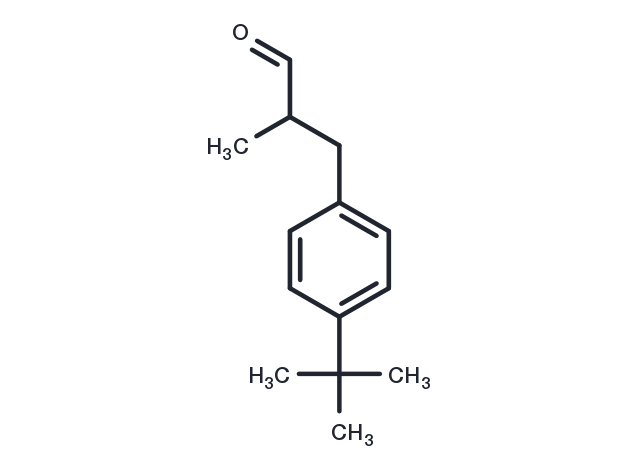Powder: -20°C for 3 years | In solvent: -80°C for 1 year


Lilial (NSC-22275) (a trade name for lily aldehyde, also known as lysmeral) is a chemical compound commonly used as a perfume in cosmetic preparations and laundry powders, often under the name butylphenyl methylpropional. It is a synthetic aromatic aldehyde.Lilial is a high-tonnage perfumery ingredient with an odour of lily-of-the-valley. It is a CMR2 material.

| Pack Size | Availability | Price/USD | Quantity |
|---|---|---|---|
| 1 g | In stock | $ 29.00 | |
| 1 mL * 10 mM (in DMSO) | In stock | $ 39.00 |


| Description | Lilial (NSC-22275) (a trade name for lily aldehyde, also known as lysmeral) is a chemical compound commonly used as a perfume in cosmetic preparations and laundry powders, often under the name butylphenyl methylpropional. It is a synthetic aromatic aldehyde.Lilial is a high-tonnage perfumery ingredient with an odour of lily-of-the-valley. It is a CMR2 material. |
| Synonyms | NSC-22275, Lilyal, NSC 22275, NSC22275 |
| Molecular Weight | 204.31 |
| Formula | C14H20O |
| CAS No. | 80-54-6 |
Powder: -20°C for 3 years | In solvent: -80°C for 1 year
DMSO: 55 mg/ml (269.2 mM)
You can also refer to dose conversion for different animals. More
bottom
Please see Inhibitor Handling Instructions for more frequently ask questions. Topics include: how to prepare stock solutions, how to store products, and cautions on cell-based assays & animal experiments, etc.
Lilial 80-54-6 Others NSC-22275 Lilyal NSC 22275 NSC22275 inhibitor inhibit
